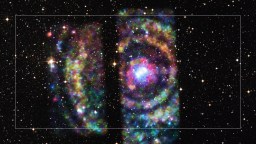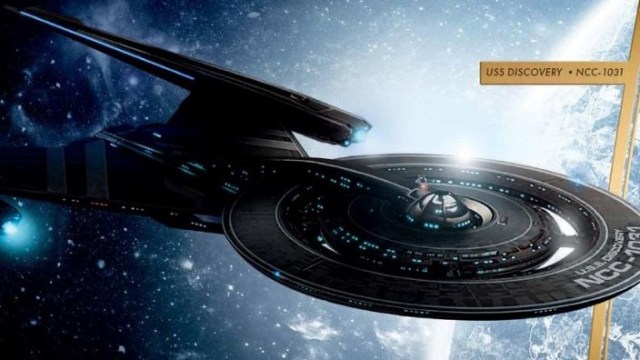Beyond the ‘Goldilocks Zone’

In the fall of 1961, Frank Drake held a small workshop at the Green Bank Observatory titled “Interstellar Communication.”
At this meeting—attended by Carl Sagan, the famous astronomer Otto Struve and six others—the famous Drake Equation was introduced.
Intended only to help organize the meeting, the Drake Equation broke the question of galactic technological civilizations into seven separate subproblems. These smaller problems were things like the rate at which stars form in galaxy, the probability of an inhabited planet generating an intelligent species, or the average lifetime of a technological civilization.
Formulated this way, the Drake Equation became the standard framing mechanism for scientific inquiries into life and the universe. Mostly, the formulation of these subproblems has stood the test of time.
But one of these subproblems has undergone a curious reconfiguration while remaining essential for astrobiology. This is the famous concept of a habitable or Goldilocks Zone. In light of these changes, it’s a good time to ask if the Goldilocks Zone still make sense for the study of life.
At the time of the Green Bank meeting, Otto Struve’s former student Su-Shu Huang had just finished work that showed how each star is surrounded by a “habitable zone of orbits.” Huang defined this zone as the band of orbits where liquid water—thought to be a key factor in allowing life to form and thrive—can exist on a planet’s surface. The inner edge of Huang’s habitable zone was the orbit where a planet’s temperature was just cool enough to keep surface water from boiling. The outer edge was the orbit where the temperature was just high enough to keep water on a planet’s surface from freezing.
Drake and his colleagues at that meeting needed to know how many planets (for those stars that had planets) were in the habitable zone. In other words, how many planets were in orbits that left their surfaces neither too hot nor too cold. This made the third variable in Drake’s seven-term equation the average number of planets in the stellar habitable zone.
Redefining habitable zones
In the years since Huang first invented the idea of a habitable zone, astronomers have found that water and planets and go together in many different ways. Perhaps the most important discovery affecting the habitable zone concept came in the late 1970s, when probes flew past the big “Galilean moons” of Jupiter. Images of the moon Europa (image at the top of this page) showed a craterless surface showing long lines of cracks, like a damaged hardboiled egg.
Europa’s strange appearance was soon explained to be the frozen surface of a vast moon-spanning ocean. Europa, it turned out, was a water world. Using a variety of techniques, scientists now estimated that sub-surface ocean of this Jovian moon extends around 100 miles below the ice surface. That meant that Europa has more water on it than our own Earth does.
Cassini flies through the plumes of Enceladus (NASA/JPL-Caltech)
And Europa wasn’t alone.
Data from the Galileo probe that orbited Jupiter in the late 1990s and the recently concluded Cassini mission studying Saturn made it clear than many of the Gas Giant (Jupiter, Saturn, Uranus, Neptune) moons have subsurface oceans.
One of Cassini’s most spectacular discoveries was the water plumes blown into space by geysers on the moon Enceladus. By flying through these plumes Cassini was even able to establish their basic composition and, therefore, the composition of the unseen ocean (the water was briny).
Finding oceans of liquid water on worlds that far outside of the sun’s alleged “habitable zone” was an epoch-making discovery in astrobiology. Gravitational tugs from the Gas Giants means that many of the ocean-hosting moons may be geologically active. The same kinds of deep-sea vents appearing at the bottom Earth’s oceans (and which form rich ecosystems) could occur on these waters-shrouded moons. That means even though these worlds can’t have liquid water on their surfaces, they may still be fertile with life.
The ocean moons represent one challenge to the concept of habitable worlds. Another challenge comes from life itself. Recently a number of researchers have been asking about the difference between habitable worlds and inhabited worlds. In particular, might it be possible that a world must be inhabited in order to remain habitable.
James Lovelock (and later Lynn Margulis) have long been working out the ways life can hijack a planet’s evolution. Their well-known Gaia model predicts that by exerting feedbacks on a planet’s climate, biospheres could keep planetary conditions in the sweet spot of life. These Gaian feedbacks could, for example, keep a planet’s surface temperature constant even though the host star becomes hotter over time.
In 2016 Aditya Chopra and Charles Lineweaver published a paper called The Case for a Gaian Bottleneck: The Biology of Habitability. They argued that without life, planets will tend to evolve out of habitable conditions. Gaian feedbacks, they claimed, were necessary to keep the planet from overheating or freezing. Thus, only a richly inhabited planet has the necessary conditions to remain habitable.
While this might sound like a chicken and egg problem, it’s really a question of how quickly Gaian feedbacks can be established on a world where life has just begun.
Along with the water moons, the relation between of habitability vs. inhabitation demonstrates the challenges faced by the classic concept of the Goldilocks Zone. But rather than disparage this now 60-year old idea, we can perhaps celebrate how far it has taken us.
If we are ready to move past the classic idea of habitability, it’s only because our knowledge has come so far since the time of Su-Shu Huang’s insights. As Newton once said, “If I have seen further, it is by standing upon the shoulders of giants.”
The post Beyond the Goldilocks Zone appeared first on ORBITER.





